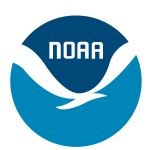- Domeniu: Government
- Number of terms: 30456
- Number of blossaries: 0
- Company Profile:
NOAA Coral Reef Conservation Program, National Oceanic and Atmospheric Administration, U.S. Department of Commerce
The diploid stage of red algae which develops after fertilization of the carpogonium.
Industry:Natural environment
The particulate decomposition or disintegration products of plankton, including dead cells, cell fragments, fecal pellets, shells, and skeletons, and sometimes mineral particles in coastal waters.
Industry:Natural environment
The synchronisation of one biological rhythm to another or to a zeitgeber cycle, e.g. Circadian rhythms are often entrained to the light-dark cycle; also, the process of small organisms being captured in the cooling water of a power plant.
Industry:Natural environment
U.S. satellite used to acquire high-resolution (500-800m) remotely sensed multi-spectral images of the earth's land surface and surrounding coastal regions.
Industry:Natural environment
A caudal fin where the upper lobe is larger than the lower lobe. Most sharks have heterocercal caudal fins.
Industry:Natural environment
A fertilized egg with the diploid number of chromosomes formed by the union of the nuclei of male and female gametes.
Industry:Natural environment
A long-period gravity wave generated by a submarine earthquake or volcanic event.
Industry:Natural environment
A potential receptor gene identified on the basis of nucleotide sequence similarities with known steroid hormone receptors.
Industry:Natural environment
A species which undertakes a spawning migration from ocean to river or vice versa.
Industry:Natural environment
A vascularized extra-embryonic membrane of amniote embryos that forms around the yolk of the egg cell in birds and reptiles. In mammals, the yolk sac membrane grows out around the empty blastocoel (blastula cavity) formed within the inner cell mass in the cleaving embryo. The blastocoel is renamed the yolk sac. In birds and reptiles, the blood vessels in its walls transport yolk nutrients to the embryo. In mammals, these vessels still form even though they don't supply nutrients to the embryo. They remain to form blood vessels in the digestive tract.
Industry:Natural environment
